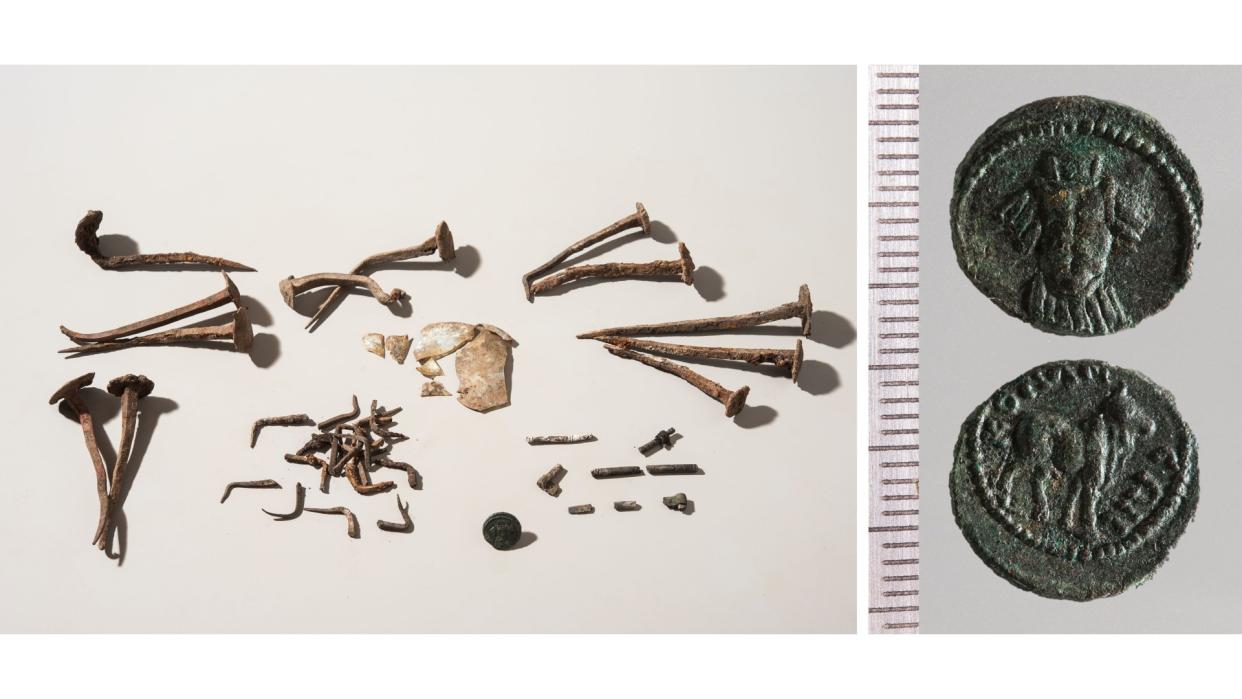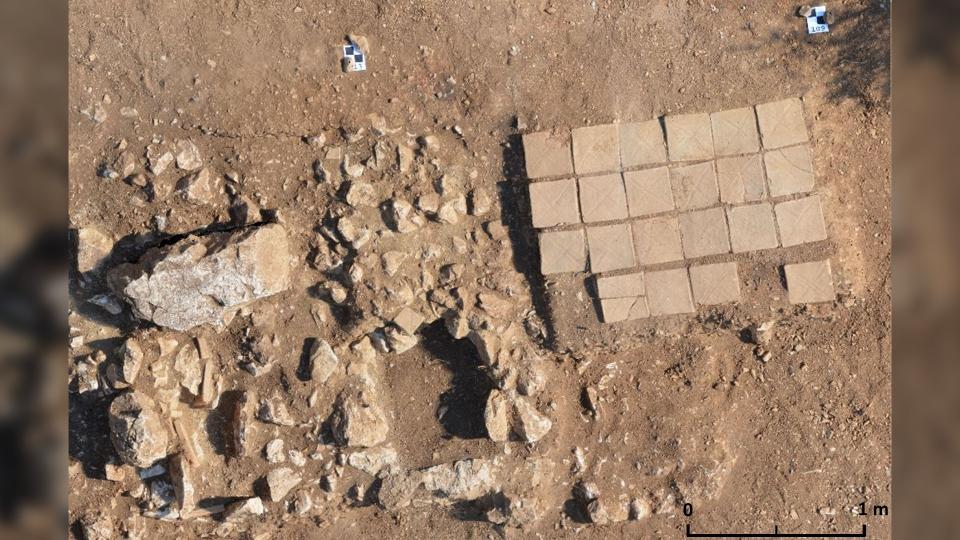Roman-era tomb scattered with magical 'dead nails' and sealed off to shield the living from the 'restless dead'

In ancient Roman times, people may have feared the "restless dead," according to the discovery of a cremation tomb sprinkled with intentionally bent nails and sealed not only with two dozen bricks but also a layer of plaster, a new study finds.
The unusual grave, found at the site of Sagalassos in southwestern Turkey and dating to A.D. 100-150, had 41 bent and twisted nails scattered along the edges of its cremation pyre, 24 bricks that had been meticulously placed on the still-smoldering pyre, and a layer of lime plaster on top of that. The individual — an adult male — was cremated and buried in the same place, an unusual practice in Roman times, according to the study, published Feb. 21 in the journal Antiquity.
"The burial was closed off with not one, not two, but three different ways that can be understood as attempts to shield the living from the dead — or the other way around," study first author Johan Claeys, an archaeologist at Catholic University Leuven (KU Leuven) in Belgium, told Live Science in an email. Although each of these practices is known from Roman-era cemeteries — cremation in place, coverings of tiles or plaster, and the occasional bent nail — the combination of the three has not been seen before and implies a fear of the "restless dead," he said.
Related: Sacred chickens, witches and animal entrails: 7 unusual ancient Roman superstitions
The archaeological site of Sagalassos was occupied from the fifth century B.C. to the 13th century A.D. and boasts numerous examples of Roman-era architecture, including a theater and a bath complex. Following its abandonment, vegetation quickly overgrew the city, preserving it.
As part of the Sagalassos Archaeological Research Project, burials in the outskirts of the town were excavated and studied, including the "non-normative cremation." Typically, Roman-era cremations involved a funeral pyre followed by the collection of the cremains, which were put in an urn and then buried in a grave or placed in a mausoleum. The Sagalassos cremation, however, was performed in place, which the researchers could tell from the anatomical positioning of the remaining bones.

Even more unusual was the contrast between the grave goods and the closure of the tomb. The archaeologists discovered typical funeral items — fragments of a woven basket, remains of food, a coin, and ceramic and glass vessels. "It seems clear that the deceased was buried with all appropriate aplomb," Claeys said. "It seems likely that was the suitable way of parting with a loved one at the time."
Marco Milella, a research fellow in the Institute of Forensic Medicine at the University of Bern in Switzerland who was not involved in this study, told Live Science in an email that "I tend to agree with their conclusion" about the bent nails, which Milella said are frequently found in Western European cemeteries dating to the first to second centuries A.D. "The sealing of the remains is also interesting and tantalizing given its possible association with the deposition of nails," Milella noted. "Fear of the dead is a possibility, as well as amulets to protect the dead — or both, perhaps."
related stories
—Samurai text tells secrets of sword-fighters' 'supernatural powers'
—Metal detectorist finds medieval gold brooch with supernatural inscriptions
—4 in 10 people worldwide believe in witches
Claeys thinks that the man in this strange cremation grave was likely buried by his next of kin in a ceremony that would have taken days to prepare and carry out. The set of beliefs that encouraged people at Sagalassos to bury this man in an unconventional way are best understood as a form of magic, or an act intended to have specific effects because of a supernatural connection. It is possible that his odd burial was made to counteract an unusual or unnatural death; however, the researchers found no evidence of trauma or disease on the bones. Unfortunately, even though the "magic cremation" overlaps in time with other graves, Claeys said that "it cannot be established with certainty whether or not any family members were buried nearby," as DNA is usually destroyed by high temperatures in ancient cremations.
"Regardless of whether the cause of [the man's] death was traumatic, mysterious or potentially the result of a contagious illness or punishment," the researchers concluded in the study, it appears to have left "the living fearful of the deceased's return."

